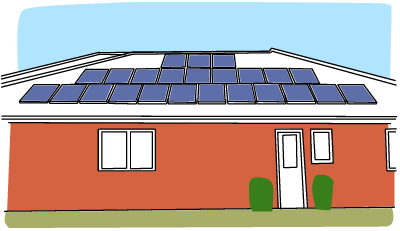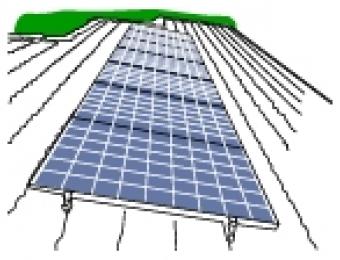
Roof mounted solar arrays are what most people will think of when they think of home solar. A series of panels are connected into an array and mounted on the roof. The key advantage of having the panels on the roof is obvious; uninterrupted, unshaded sun exposure all day long to absorb the optimal amount of the sun’s light. Another advantage is that the panels are largely protected from incidental damage, since they're up and out of the way.
When is a roof-mounted solar setup appropriate?
Most of the time, a solar installation will go on the roof. This may be inappropriate if the roof doesn't get enough sun, such as would be the case if the roof were permanently shaded by tall buildings or immovable trees. In these cases you might even question the wisdom of a solar installation at all though, since there isn't likely to be an area close to the house that will get enough sunlight.
The load-bearing capacity of your roof (or lack thereof) may also factor into the choice of a roof or ground-mounted array.
What sorts of things need to be taken into account?
The primary concern for a roof mounted array is whether the roof can sustain the extra weight. Depending on how your home's been built and what you already have installed in the ceiling or on the roof, additional support may need to be built to ensure that the panels have enough support and won’t come crashing down through the ceiling.
Attaching the supports directly to the frame is a great idea to improve stability. Any holes made in your roof need to be resealed watertight once the work has been completed.
A roof mounted solar array will typically face north if you're in the southern hemisphere, and in Australia is likely to be angled at a 30º incline. This will ensure that it collects the greatest amount of light as the sun passes overhead. The array may need to be tilted higher or lower to reach that mark, depending on the incline of your roof.
The installation should also be completely watertight, since it will be under constant exposure to the elements. Nearby trees should be well trimmed to prevent leaf rubbish building up and blocking the panels. Obstructions, debris or a buildup of dirt on your solar panels will all affect how well they produce electricity.
|
Advantages
|
Disadvantages
|





